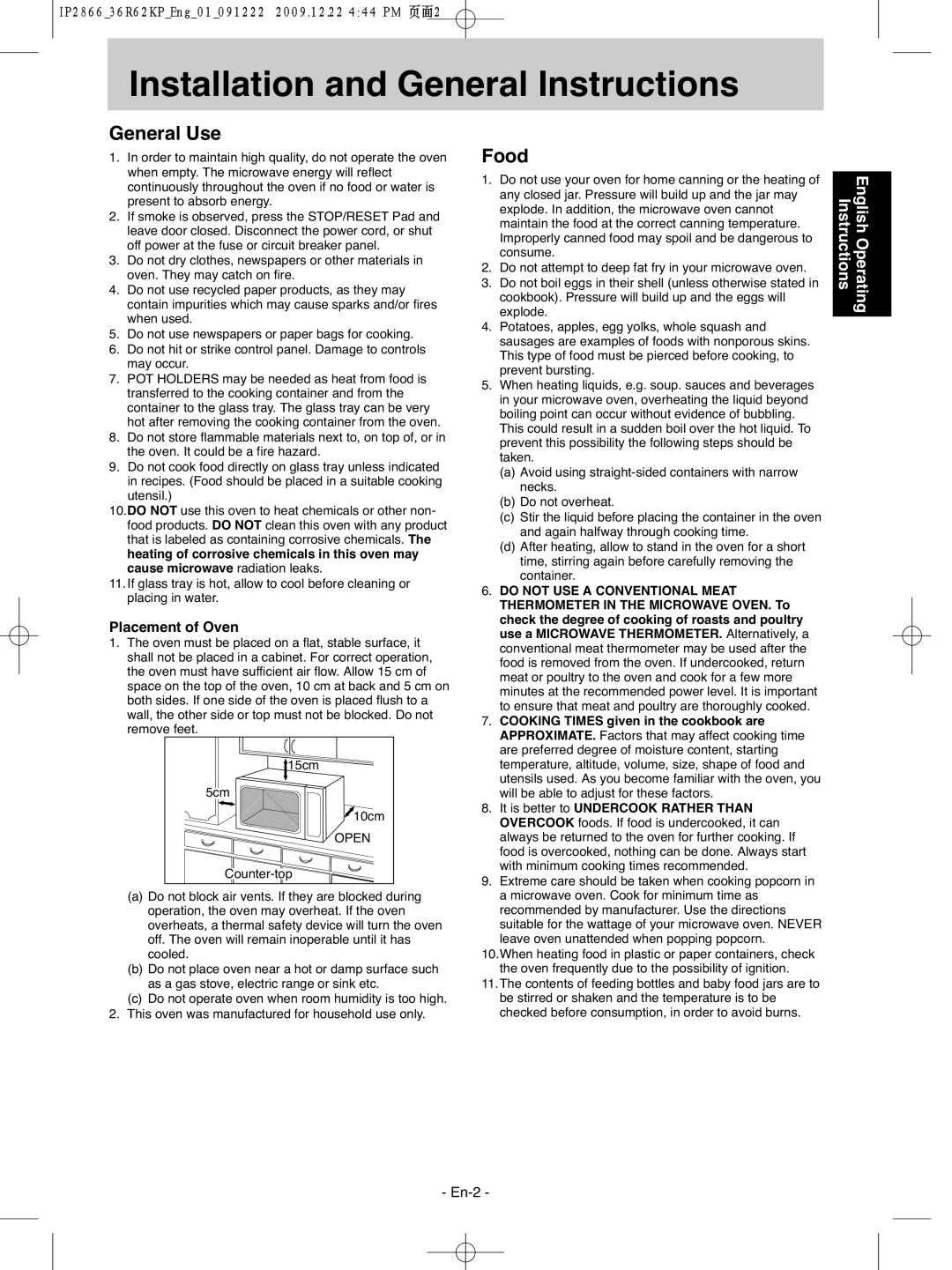NN-G335WF specifications
The Panasonic NN-G315WF, NN-G335BF, NN-G335WF, and NN-G335MF microwave ovens are notable kitchen appliances that exemplify Panasonic's commitment to innovative technology and user-friendly design. Each model brings distinct features to enhance your cooking experience, making them reliable choices for any kitchen.The NN-G315WF is designed for versatility and efficiency. With a capacity of 23 liters, it is ideal for small to medium-sized households. This model features Panasonic's Inverter Technology, which provides a consistent stream of cooking power. Unlike traditional microwaves that cycle on and off, the inverter system maintains a steady temperature, ensuring that food is evenly cooked and preventing overcooking. The NN-G315WF includes a variety of preset cooking modes, making it easy to prepare a wide range of dishes, from steaming vegetables to reheating leftovers.
The NN-G335BF and NN-G335WF share many similarities, but they differ in design aesthetics. Both models boast a 25-liter capacity and state-of-the-art Inverter Technology. Additionally, they offer a convenient one-touch sensor cooking feature that automatically adjusts cooking time based on the type of food being prepared. This takes the guesswork out of cooking, allowing for precise results every time. They also come with a sleek design that complements modern kitchens, with LED lights and easy-to-use controls for an enhanced user experience.
On the other hand, the NN-G335MF model adds a bit more versatility with its grilling option. This feature allows users to achieve perfectly grilled dishes, expanding the range of meals that can be prepared. The fusion of microwave cooking and grilling ensures that food is not only cooked quickly but also develops that desirable grilled flavor. Like the other models, it utilizes Inverter Technology, ensuring even cooking throughout the dish.
All four models include safety features such as child locks and easy-to-clean interiors for hassle-free maintenance. Their compact designs make them an ideal choice for kitchens with limited space while providing ample functionality.
In summary, whether you choose the NN-G315WF for its compactness, the stylish NN-G335BF or NN-G335WF, or the versatile NN-G335MF for grilling, you can be assured of quality performance backed by Panasonic's innovative technology. These microwave ovens are perfect for anyone looking to enhance their cooking capabilities with modern convenience and style.

